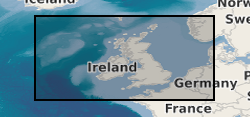CSV file (.csv)
Type of resources
Available actions
Topics
Keywords
Contact for the resource
Provided by
Years
Formats
Representation types
Update frequencies
Scale
-

BGS has drilled almost 600 boreholes to prove seismic interpretations of the marine Quaternary geology and bedrock from the UK Continental Shelf (UKCS). The collection also includes additional third party data and has assisted in the creation of BGS marine geology maps. The boreholes penetrate beneath the sea bed to depths ranging from about 10 m to over 300 m, depending on the target depth or technical problems associated with drilling the borehole. The data include descriptive geological core logs and data which have been captured from these, and in some cases, natural gamma logs. A variety of analyses have been conducted on the core material, such as particle size analysis (PSA), micropalaeontological analysis, geotechnical investigations, palaeomagnetic analysis and age dating. Core material is managed as part of the BGS materials collection and is available for examination and subsampling. The data are stored as part of the National Geoscience Data Centre (NGDC) and the Marine Environmental Data and Information Network (MEDIN) Data Archive Centre (DAC) for geology and geophysics. Data are delivered via the BGS GeoIndex. This dataset is covered by multiple layers, split by the type of material or sampling technique, and the type of data. Borehole-type samples (including boreholes, cores and drills), grab-type samples and other sample types are separated, and there is a metadata layer (containing metadata and links to scanned borehole logs) and a geological data layer (containing depth-bounded geological observations and/or measurements) for boreholes, grabs and other sample types. For borehole-type data, a geotechnical layer containing numerical results of geotechnical tests is also provided. Where available, particle size analysis (PSA) and geochemical data are also provided as separate layers. The data are applicable to a wide range of uses including environmental, geotechnical and geological studies. Reference: Fannin, NGT. (1989) Offshore Investigations 1966-87 British Geological Survey Technical Report WB/89/02, British Geological Survey.
-

Results of geotechnical testing carried out, at various depth intervals, on shallow cores or boreholes collected by BGS from the UK Continental Shelf (UKCS). The bulk of the data north of 56N are in digital form and result from testing carried out onboard survey vessels using hand-held test equipment (penetrometers and shear vanes). These values are averaged for each test interval, and are expressed in kilopascals (kPa). There are approximately 6,000 test results in the dataset. Some more detailed test information, in non-digital and report form, is held for selected sites. For most sites where digital data are not available, geological descriptions of core material contain semi-quantitative information on the stiffness of the material. Geotechnical knowledge is required to understand and interpret the results if they are to be used as a basis for engineering studies. Core material is managed as part of the BGS materials collection and is available for examination, testing or subsampling. The data are stored as part of the National Geoscience Data Centre (NGDC) and the Marine Environmental Data and Information Network (MEDIN) Data Archive Centre (DAC) for geology and geophysics. Data are delivered via the 'Offshore samples: geotechnical data' layer on the BGS GeoIndex. Reference: Fannin, NGT. (1989) Offshore Investigations 1966-87. British Geological Survey Technical Report WB/89/2, British Geological Survey.
 NERC Data Catalogue Service
NERC Data Catalogue Service